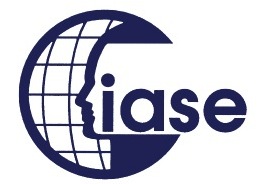Is Dyscalculia And Mathematical Anxiety The Same?
22nd June 2022

“By seeking and blundering we learn.” -Johann Wolfgang von Goethe
Developmental dyscalculia is basically known as Dyscalculia. It is a mathematical learning special need. Children with dyscalculia struggle with mathematics on a variety of levels. It includes difficulties comprehending the significance of numerals as well as utilizing mathematical ideas to solve problems. Dyscalculia is sometimes called “number dyslexia” or “math dyslexia.”
You must be thinking it is something that every child suffers from at the beginning and at a later stage it does not persist anymore. Here, what you are probably thinking is Mathematical anxiety which is different from Dyscalculia.
In the school year 2017-2018, around 14% of all students in the public-school system in the U.S. were reported to have learning difficulties. This equates to approximately 7 million pupils with learning disabilities. These data cover children and young adults aged three to 21, which are the years when these children or young adults may still be in school and getting special education.
Click to know the Statistics here
So, what is the difference between Dyscalculia and Mathematical Anxiety?
- Dyscalculia is a type of learning disability that impacts math skills like calculating, remembering math facts, and comprehending math concepts.
- Mathematical anxiety is a psychological condition characterized by self-doubt and a fear of failure.
Mathematics anxiety and dyscalculia frequently go hand in hand but they are not the same thing. The former is quite widespread, and its hallmarks are expressive factors — not essentially cognitive ones.
Symptoms of Dyscalculia
From the above point, we have derived that Dyscalculia is a type of Learning Disability. Now that we have an idea about Dyscalculia let’s dive into the symptoms of it.
There are a few particular indications of dyscalculia to keep an eye out for:
- Beginning in preschool, children have difficulty comprehending numbers and measuring quantities.
- Trouble recognizing the relationship between a number and the quantity it represents.
- Having problems reading a clock.
- A difficult time calculating, comparing, or estimating numbers or amounts.
- Basic mathematical calculations challenges.
- Use of fingers to count past the age of reason and difficulty counting Use of fingers to count past the age of reason and difficulty counting backwards.
- Problems recognising arithmetic symbols and understanding what calculation they refer to.
Though not considered and addressed often Dyscalculia is a big deal.
Major Causes of Dyscalculia
Researchers are still unsure what causes dyscalculia. However, the following are two potential causes of dyscalculia:
- Genetic or Inborn cause: Dyscalculia is a condition that tends to occur in families. Genetics may also have a role in math difficulties, according to research.
- Cognitive development: Brain scan studies have revealed certain variations between those who have dyscalculia and those who do not. The differences stem from the way the brain is organised and how it operates in areas related to learning abilities.
Apart from these two causes there are two more domain-specific hypotheses which are prominent in the case of developmental Dyscalculia.
- The magnitude representation (or number module deficit hypothesis)
- The access deficit hypothesis
Not digging too deep into these hypotheses let us discuss how we can make mathematics easier for these children who are suffering from Dyscalculia.
- Use a Universal Design for the learning approach.
- Teach math as if it were a second language.
- To avoid overwhelm, limit visual stimulation and isolate numbers; present just one task at a time.
- Concepts connected to colour coding
- Keep an eye out for unintentional dyscalculia errors.
- Segregate and simplify information
- Allow kids to work in a short period of time.
- Reduce the number of problems allocated.
- Students should demonstrate how to solve problems by identifying crucial components, vocabulary, and samples to explain how and why they did so.
- Pace yourself with the use of visual clocks.
- To lessen the cognitive load, offset visual memory deficiencies, and help students "preserve" numbers, offer graphs and charts and signals.
To be honest, it looks very confusing. Dyscalculia, Mathematical Anxiety, Mathematical Dyslexia all seem so similar but have some differences.
What Causes Math Anxiety?
Following are the major causes of math anxiety:
- Time limits on tests or deadlines that are being imposed on students.
- Fear of public embarrassment.
- Prior disagreeable math experiences.
- Intense lectures by teachers.
- Few common core standards.
Usually, math anxiety affects the working memory of the children. It is important when we need to keep track of numbers.
Some of the common symptoms of math anxiety are – nervousness, passive behaviour, feeling of being alone, lack of confidence, panic throughout tests or when called on to answer questions, etc.
How To Identify A Student Who Has Dyscalculia?
So, how do we identify them and most importantly as special education teacher how do we get aware of Dyscalculia
Upgrading yourself! Go for a course on Learning Disability that focuses on how to identify and recognise these special children among the others. This type of course will make you aware of LD and how to accommodate these special kids. This type of course is flexible in nature so it helps you do it from any part of the world. It is not only for experienced educators but also for aspiring ones. As an educator one should identify and cater to all the problems a learner faces in the classroom.
The training will also provide them with the necessary approaches and methodologies for maintaining a positive relationship with students and creating a conducive learning atmosphere in the classroom.
We would like to conclude by saying that several children have learning difficulties, and it is critical that they receive adequate support in the classroom in order to succeed. The preceding data on learning disabilities reveal that these problems are not uncommon and should be handled carefully.








